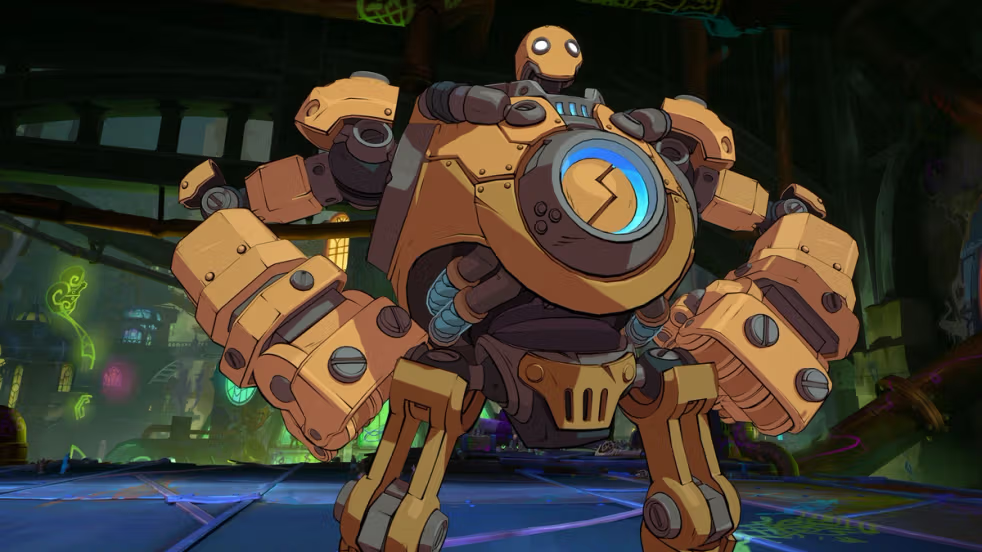Shouldn't have expected anything less from the duo that revolutionized fighting game netcode with GGPO.
If there's one thing you can't take away from Riot, it's that they have some extremely passionate developers who always seem eager to share their plans for the game, their design process, or how certain features work.
They've done that countless times with systems that stand behind League of Legends, like when they went into minute details about the fog of war system. They've done the same with Valorant when they explained their approach to combating the infamous issue that every online shooter tends to face – peeker's advantage.
Finally, it's 2XKO's turn, with the latest blog post from Tony Cannon going into very specific details of how they crafted the game with the online play in mind, and innovating things in the process.
If you're curious about the specifics, it's well worth reading the full post, but for now let's highlight the general things we can learn from this. The biggest one among all of them is that 2XKO is a bit of an oddity among fighting games, in that it was entirely built with online play in mind.
All the animations, frame data, mixups, pokes, mechanics, and special abilities were made to ensure that the game feels equally good offline and online. While online has to be a major consideration for most recent fighting games, it's basically unprecedented for people in charge to structure the development around online functionality.
Even the fixed level of input lag (3 frames) is the number they settled on to ensure parity between all versions of the game, while also giving the netcode some breathing room. And if you got to try the game, you can likely attest to how smooth it feels in spite of not chasing the lowest input lag possible.
This wouldn't have been possible if not for Riot's own extensive network infrastructure, which 2XKO utilizes in conjunction with its own unique systems instead of going for the traditional P2P method. This also enables on of the game's key components, the co-op play where up to 4 people can control individual characters. At Tony explains, trying to properly sync up the players is difficult enough as it is, but it becomes exponentially more difficult when you have more than 2 connections, which is why it's important for the server to act as the authority.
Another key component of the server based approach, is that it enables Riot to ensure privacy and security. Without a direct P2P connection, other players can't grab your IP and then use it maliciously. Not only that, but technically there is always an extra copy of the game running in the cloud on Riot's end. This is what they call a GVS (or Game Validation Server). Thanks to GVS, cheating, botting, using macros, lag switching, or generally tampering with the game becomes a lot more difficult, and should someone try to ruin the connection, you will not feel any issues on your end.
Lastly, Tony also highlights how much they wanted online to feel like a proper experience. This meant enabling not only smooth netplay, but also the social component of playing fighting games. As you might have noticed, 2XKO heavily leans on using player lobbies. This is usually not something that people welcome with open arms, but as Tony explains, they made sure that you don't experience this as a downside. By using cross-lobby matchmaking and Microsoft's True Skill 2 algorithm, 2XKO tries to match you both quickly, and with someone who is actually on your level.
And if you do like the lobbies, another important feature that hinges on the server structure, is 2XKO's unique approach to spectating matches. Normally, when you try to hop in and watch some matches, you have to sit through the fast-forward version of the entire match. It works fine if you hopped in early, but feels really bad if the people you were trying to watch are wrapping up the match.
Now, instead of doing this, 2XKO allows you to get a quick pop-up that shows the actual current state of the match. That's because instead of feeding you the whole input history, they ask GVS copy of the game to send a snapshot from when you approached to spectate. As such, once you open the tiny snapshot save state, the inputs only have to be sent from that point onwards.
Any attempt to seamlessly and smoothly connect strangers from all over the world is bound to have some innate issues and quirks (laws of physics made sure of that), but what 2XKO is doing might just be the current peak of online multiplayer experience. It's not something we can expect from other publishers, since this required years of development, foremost experts on fighting games and netcode, as well as Riot's existing infrastructure that was getting built up for over a decade.
However, regardless of how the game ends up performing, 2XKO can already serve as an interesting example of what is possible when developers are extremely concerned about the online experience of their players.




















